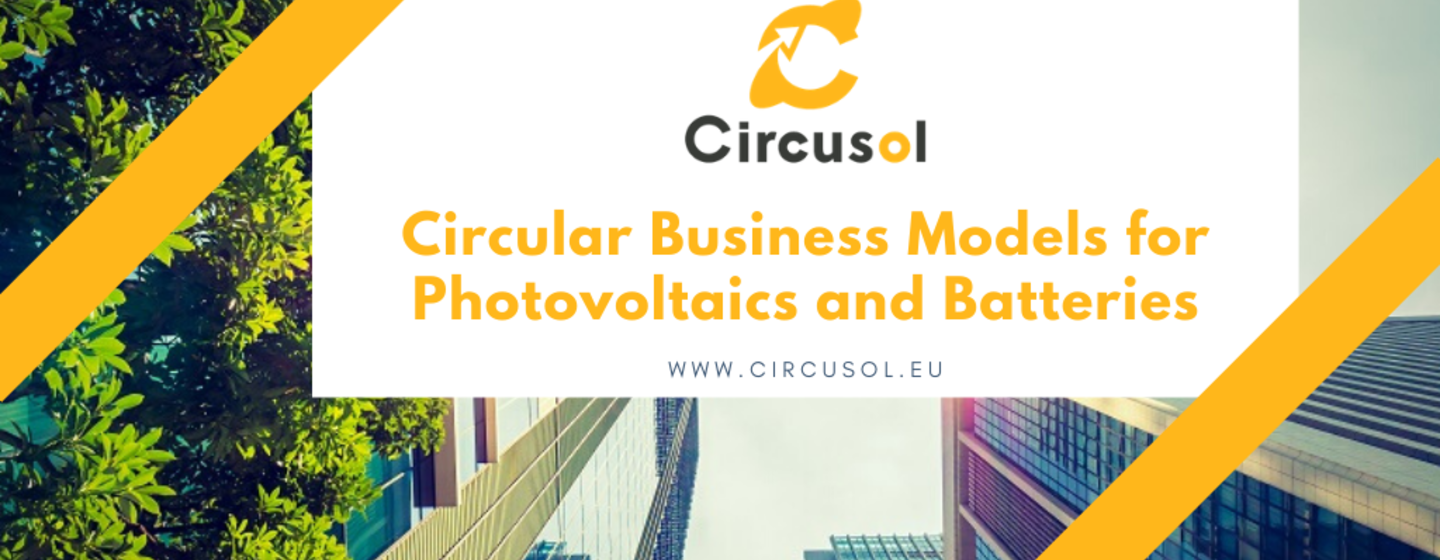
CIRCUSOL: Solar power business models towards a circular economy in Europe (PRESS RELEASE)
CIRCUSOL: Solar power business models towards a circular economy in…

The exponential growth of PV installations, their subsequent recycling, and the waste from the remaining material create significant technical and ecological challenges. At the same time, new opportunities for added value are emerging for important players in the photovoltaic sector. The CIRCUSOL research consortium is investigating one such opportunity: the repair of defective or degraded PV modules with a view to their reuse as used products ("secondary use"). It is estimated that up to 80% of future PV waste from defective modules will result from damage during production, transport, or the first four years of operation, rather than from products that have reached the end of their expected technical life [1]. Of this 80 %, according to the CIRCUSOL consortium, between 45 % and 65 % should be repairable or refurbishable and marketable as secondary (second life) modules [2].
Depending on the intensity with which they have been used, lithium-ion batteries in electric vehicles are taken out of service after eight to ten years because their capacity is decreasing. However, it is estimated that these used batteries still reach up to 70% of their original capacity, so they could be reused for less demanding applications, for example for stationary storage of energy from renewable sources (e.g. solar).
CIRCUSOL is using a variety of demonstrations to assess the feasibility of innovative business models giving a second life to lithium-ion batteries. One of these is the inclusion of second-life battery systems in existing power purchase agreements. One condition set in this framework is that this amendment does not lead to an increase in electricity costs for the final consumer. It is expected that the integration of the battery system into an "Electricity Storage as a Service" model will work through a provider offering a Product and Service System (PSS), e.g. Eon. The customer does not own the battery system but uses it for a pre-determined period of time. For the owner of a PV plant, the integration of a battery system would mean an increase in self-consumption, i.e. he would draw more cheap electricity from the PSS provider than he would draw expensive electricity from the supply network. In return, the PSS service provider could sell more of the photovoltaically generated electricity to the owner of the PV plant - and at a higher price than the normal feed-in tariff offered by the energy supplier. Overall, the storage of electricity from renewable energies promises greater flexibility. Tests are being carried out to determine the technical and financial feasibility of integrating second life battery systems into existing PSS offerings.
One of the biggest challenges in providing second life lithium-ion storage solutions in the coming years is the lack of standards for battery packs. Traditionally, manufacturers have developed their own battery models, which differ in size, chemical composition, and physical form. This makes the refurbishment process more complex since it is not known what types of batteries reach the processing companies.
A second obstacle is the declining costs of new batteries, which threaten the use of reconditioned batteries for a second life cycle. In order for such batteries to be attractive, the price difference between them and new lithium-ion batteries must remain sufficient to justify the limited performance of used installations. As with PV modules, there is currently no guarantee of performance, quality, or safety for second-hand batteries. These factors are crucial for the market's acceptance of these solutions because technical guarantees and reputable suppliers are essential to gain the trust of customers. In view of this difficult situation, only cooperation within the industry can ensure a design that facilitates a second life, improves the potential for refurbishment, and defines industrial safety standards for used batteries.
The industry and ecosystem in which the reuse of PV modules and batteries takes place are quite complex. There is therefore a need for a tool that can help decision-makers assess the consequences of their decisions in the short and long term. BUAS is developing a mathematical model to identify the dynamics resulting from the flow of materials and information during the distribution of PV modules and batteries in their first and second life cycles. The simulation model, based on the systems dynamics methodology, is intended to enable scenario and policy analyses, taking into account the legal, social, technical, ecological and economic factors involved, as well as the barriers that affect circular business models.
Maria Franco Mosquera, scientific collaborator, BUAS
Stefan Grösser, Professor of Strategic Management and Organisation, Head of the Management Engineering Department, BUAS
The original article was published here.

CIRCUSOL: Solar power business models towards a circular economy in…